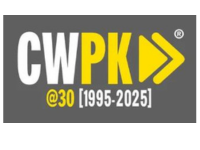Among the 17 Sustainable Developmental Goals (SDGs) set by the United Nations Development Program (UNDP) is to end hunger, achieve food security and improved nutrition and promote sustainable agriculture.
The targets is to by 2030 end hunger and ensure access by all people, in particular the poor and people in vulnerable situations, including infants, to safe, nutritious and sufficient food all year round.
Technology has been one of the major tools being used by organizations to fight hunger. Some of the ways technology has helped is to improve prediction of food insecurity with accuracy, which has resulted in improved information and data for farmers and researchers working in the field and improved policies and responses as a result.
Tech & Fighting Hunger On A Global Level
One of the programs working with technology to fight hunger is the World Food Program, they are harnessing technology to not only spread awareness through engaged and active audiences, but also use it to more effectively to bring food assistance to the tens of millions of the World’s most vulnerable.
Their example of Digital Food in Palestine, where they have provided beneficiaries with “digital food” through an electronic voucher system that allows people to redeem their electronic coupons through a swipe card in selected shops. This allows for a more diversified range of food items, such as fresh milk and eggs, which cannot be included in a traditional food basket
Another example is that WFP’s VAM team uses the most advanced technologies including Geographical Information Systems (GIS), innovative satellite applications and Personal Digital Assistants (PDAs) to collect manage and analyze data, in order to reach the right people with the right food at the right time.
They have made use of social media as well with their initiative WeFeedBack which is the world’s largest community for sharing food and changing lives. New and unique approaches to fighting hunger that is social, interactive, and fun; where one can choose their favorite food, put it into the Feedback Calculator along with the estimated cost, and then calculate how many hungry children this would feed.
Pakistan – Hunger, Food Loss & the role of Tech
Access to nutritional food is a major concern especially in developing countries such as Pakistan despite having agriculture as its most important industry. According to a 2017 report of UN’s Food and Agriculture Organization (FAO), 40 per cent food produced in Pakistan is wasted instead of being consumed by people, furthermore the Global Hunger Index’s 2017 report ranks Pakistan at 106 out of 119 countries and puts its status as ‘serious’.
However, there are many social enterprises within Pakistan that are also working with technology to fight hunger and food wastage. One of the leaders in the field for Pakistan is the Robin Hood Army (RHA).
Despite having its starting point from Delhi in August 2014, RHA has gone to expand to over 70 cities across the world and is modeled on Portugal’s Re-Food Program that relies solely on distribution of excess food.
RHA was established in 2015 in Pakistan, and ever since they have managed to feed over 15 slums in Lahore alone. They distribute food to the areas every two weeks and are always open for volunteers especially restaurants and stores to give them the excess food. They have managed to leverage social media to the fullest and have their own website as well for the purpose of providing food to the needy.
Another such program working in Pakistan is Rizq — a start-up co-founded by three varsity friends in 2015. Their model also consists of getting extra food from households, restaurants, multinational firms and caterers that they package and sell at a token price to the labor class. Rizq also has a rickshaw and a helpline. They work as a ‘food bank’ near the Grounds bridge in Sultan Park area housing around 100,000 people. They have managed to verify households and have issued them cards through which the residents get food from them at a rate of Rs10 per packet.







